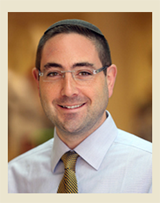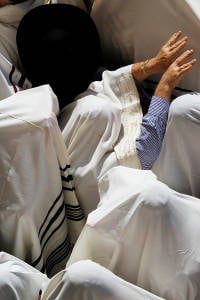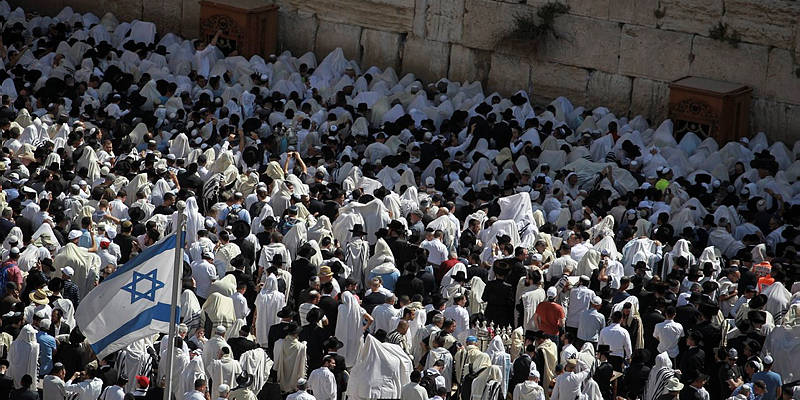
Rabbi Ari Enkin
Birkat Kohanim – the priestly blessing – is performed daily in Israel and only on particular occasions in the Diaspora. The reason is that those who bless the congregation may do so only if they are happy, and a Jew is truly happy on a daily basis only in the Holy Land.
Birkat Kohanim, the “priestly blessing” is bestowed upon the congregation by the Kohanim, those who descend from the Priestly tribe, descendants of Aaron the High Priest, brother of Moses. The Kohanim were chosen to work in the Holy Temple and assist others in serving God. This lineage essentially continues unbroken to this day, with a percentage of the Jewish people identifying as Kohanim.
The Torah says that the Kohanim have a special duty to raise their hands and bless the people, and God promises that “I will place my name on their hands [the Kohanim’s hands] and bless them,” meaning the Jews receiving the blessing and the Kohanim who bestow it. Indeed, the sages stressed that although the Kohanim are bestowing the blessing, it is not them or their mystically positioned hands that results in the blessing, but rather, it is God’s desire that His blessing be bestowed by means of the Kohanim. Even after the destruction of the Holy Temple, the Birkat Kohanim has continued and to this day. In all Jewish communities, the Kohanim bless the congregants in the synagogue during certain prayer services.
The Birkat Kohanim consist of the following three verses:
May the Lord bless you and protect you.
May the Lord’s face shed light upon you and be gracious unto you.
May the Lord lift His face towards you and give you peace.
Only Kohanim may perform the Priestly Benediction, and a minyan, meaning a quorum of at least 10 men, must be present. Just before the blessing begins, the Levites of the congregation, those who descend from the tribe of Levi, wash the hands of the Kohanim. The Kohanim then remove their shoes, but if they are unable to remove their shoes without touching them, the shoes are removed prior to the washing.

Kohanim perform the priestly blessing at a mass prayer session at the Western Wall in Jerusalem during Sukkot. (Miriam Alster/Flash90)
The Kohanim then proceed towards the front of the sanctuary and position themselves on the specially designated platform. Once all the Kohanim are ready and assembled on the platform, the cantor or prayer leader will prompt the Kohanim by reciting each word of the blessing with the Kohanim repeating the word after him. If the prayer leader is a Kohen himself, he does not prompt the other Kohanim in the blessing. Instead, a non-Kohen is designated with that task, and the prayer leader recites the blessing along with all the other Kohanim.
The Kohanim cover their heads with their tallitot (prayer shawls), recite the preliminary blessing while facing the Holy Ark and then turn to face the congregation. The words of the blessing are usually recited in a traditional melody. If there is more than one Kohen reciting the blessing, a member of the congregation is appointed to call out to the Kohanim to prompt them to begin the blessing. However, if there is only one Kohen present, he begins the blessing without prompting.
The Mishnah (rabbinic literature) says that a person who was troubled by a dream should reflect on the dream while the Kohanim recite their blessing, as doing so is said to ameliorate the dream and any possible consequences or premonitions that it might have. Some even recite prayers for ameliorating the dream while the Kohanim recite the blessing.
In most communities it is customary for the members of the congregation to spread their prayer shawls over their heads as the blessing is recited. Doing so allows one to focus on receiving the blessings. It is also said that during the Temple era, a Divine light of sorts would emanate from the fingers of the Kohanim, at which the people were forbidden to gaze. If a man has children, they join him under his tallit as well. In fact, many parents bless their children on Friday night before the beginning of the Sabbath meal with the words of the Birkat Kohanim.
The Birkat Kohanim as a ceremony is generally performed daily in most of Israel. In the Diaspora, most Sephardi Jews perform Birkat Kohanim every day during the morning service, while most Ashkenazi Jews perform the ceremony only on Passover, Shavuot, Sukkot, Rosh Hashanah, and Yom Kippur. The Ashkenazi practice is based on the requirement that the Kohanim be happy when they bless the congregation. We are taught that in the Diaspora, Jews are only truly happy and joyous on holidays. Life in Israel, on the other hand, is something that brings enough happiness and joy each and every day to warrant the daily blessing.
By: Rabbi Ari Enkin, spiritual director, United with Israel

Do You Love Israel? Make a Donation - Show Your Support!
Donate to vital charities that help protect Israeli citizens and inspire millions around the world to support Israel too!
Now more than ever, Israel needs your help to fight and win the war -- including on the battlefield of public opinion.
Antisemitism, anti-Israel bias and boycotts are out of control. Israel's enemies are inciting terror and violence against innocent Israelis and Jews around the world. Help us fight back!




